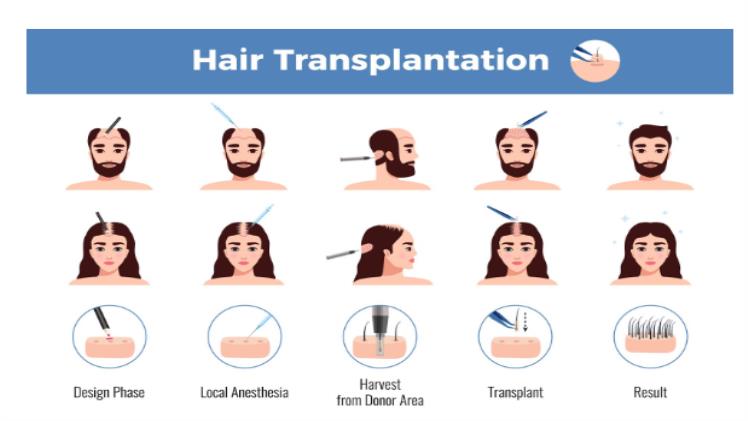Are you tired of struggling with your low-porosity hair, desperately searching for the key to unlock its secrets? Well, look no further! We have curated a comprehensive guide that will take you on a journey to mastering your locks like never before. Discover the hidden gems and expert tips that will transform your low-porosity hair into a luscious crown of beauty. Brace yourself – it’s time to unlock the secrets and unleash the full potential of your mane!
Mastering Care for Low Porosity Hair: Tips and Techniques
If you have low porosity hair, it means your hair cuticles are tightly closed. This is a good thing! It means your hair is resistant to moisture and won’t absorb products for curly hair as readily as other hair types. The downside is that it can be challenging to moisturize low-porosity hair because the water has trouble penetrating the cuticle.
First, let’s talk about how you can tell if you have low-porosity hair. If your hair feels dry and brittle, takes forever to air dry, or doesn’t hold curl well, then you probably have low porosity hair. Another telltale sign is if your hair repels water rather than absorbing it.
Now that you know how to identify low-porosity hair, let’s talk about how to take care of it. The first step is to use a clarifying shampoo. Next, use a deep conditioner or hot oil treatment once a week to help hydrate your low-porosity locks. Be sure to use leave-in conditioner and serum daily to help seal in moisture. Now that you know all the best practices for handling low-porosity hair, show off your gorgeous mane!
Identifying Your Hair Type
If you have low porosity hair, it means your hair cuticles are tightly closed. It can be due to several factors, including genetics, damage, or the environment. Because of this, low-porosity hair has trouble absorbing moisture and is often dry, brittle, and frizzy.
There are a few ways to determine if you have low porosity hair. One way is to do a strand test: take a single strand of clean, dry hair and place it in a cup of water. If the strand floats, your cuticles are sealed, and you have low-porosity hair.
Another way to tell is by doing the finger-combing test: take a small section of clean, dry hair and try to comb it with your fingers. If your fingers get stuck or tangled in your hair, it’s another sign that you have low porosity hair.
Once you’ve determined that you have low porosity hair, there are a few things you can do to manage it. First, invest in some good quality products designed explicitly for low-porosity hair. These products will help add moisture and hydration to your strands. And when washing your hair, use lukewarm water instead of hot – this will help prevent
Tips for Caring for Low Porosity Hair
If you have low-porosity hair, you know it can be challenging to keep your locks healthy and hydrated. But don’t worry. We’ve got you covered! Here are our top tips for caring for low-porosity hair:
- Use gentle cleansing products. Low-porosity hair is often delicate and prone to damage, so it’s essential to use gentle cleansing products that won’t strip away its natural oils. Look for sulfate-free products with moisturizing ingredients like glycerin or aloe vera.
- Pre-poo before shampooing. To help protect your low-porosity hair from damage during shampooing, try pre-pooing ( applying a conditioner or oil to your hair before shampooing). It will assist in creating a barrier between your hair and the harsh cleansers in shampoo, preventing them from stripping away too much moisture.
- Avoid heat styling. Low-porosity hair is often resistant to absorbing moisture, so using heat styling tools can end up causing more harm than good. If you must use heat, use a heat-protectant product beforehand and avoid excessive heat exposure.
- Use deep conditioning treatments regularly. Because low-porosity hair has difficulty absorbing moisture, it’s crucial to use deep conditioning treatments regularly to boost hydration. Look for medicines that contain penetrating oils like avocado or olive oil, which can help open up the cut
Products to Avoid and What to Use Instead
When it comes to low-porosity hair, there are certain products that you should avoid and others that you should use instead. Instead, look for products that are designed explicitly for low-porosity hair. The hair cleanser for curly hair will be gentler and help lock in moisture.
Common Problems and Solutions
Here are some common problems associated with low porosity hair, along with solutions to help you achieve healthy, beautiful locks:
Problem: Your hair is difficult to moisturize.
Solution: Look for products that are designed explicitly for low-porosity hair. These products will be lighter in weight and more easily absorbed by your hair. Avoid heavy oils and creams, which can sit on top of your hair and prevent moisture from getting in. Instead, opt for light oils like jojoba, grapeseed oil, or a silicone-free leave-in conditioner.
Problem: Your hair dries out quickly and is prone to frizz.
Solution: Again, look for products designed explicitly for low-porosity hair. These products will help seal in moisture and prevent your hair from drying out. You may also want to use a water-based leave-in conditioner or misting your hair with water before applying the product.
Problem: Your hair needs to hold styles better.
Solution: You can do a few things to help your styles last longer. First, ensure your hair is hydrated properly – this will help it improve.
Maintenance Routine for Low Porosity Hair
Here are some tips for keeping your low-porosity hair healthy and strong:
- Use gentle shampoos and conditioners. Products with solid chemicals or sulphates should be avoided, as they can deprive your hair of its organic oils and make it more challenging to maintain moisture. Instead, look for products that are specially formulated for low-porosity hair.
- Deep condition regularly. Deep conditioning is essential to any haircare routine, but it’s critical for low-porosity hair. This kind of hair tends to be drier than others, so regular deep conditioning will help keep it hydrated and healthy.
- Protect your hair from heat damage. It can damage any hair, but it’s especially harmful to low-porosity strands. If you must use heat styling tools, use a heat protectant spray beforehand.
How to Unlock the Secrets of Low Porosity Hair Care
If you have low-porosity hair, you may find that your hair struggles to absorb moisture and products. But don’t worry – you can take a few simple steps to care for your low-porosity hair and get it looking and feeling its best!
- Use a clarifying shampoo once a week.
A clarifying shampoo will help remove build-up from your hair, preventing moisture and products from being absorbed properly.
- Avoid heat styling.
Heat styling may damage your hair, making it much more challenging for moisture to reach the hair shafts. Use a heat protectant spray first if you must use heat.
- Deep condition regularly.
Deep conditioning is essential for low-porosity hair as it assists in hydrating and moisturizing the hair shafts. Try doing a deep conditioner treatment at least once a week – your hair will thank you!
- Use products designed for low-porosity hair.
There are now many haircare products designed explicitly for low-porosity hair – use them! These products often contain ingredients that help to open up the cuticle so that moisture can more easily be absorbed into the shafts.
Conclusion
Low porosity hair is a unique type of hair that requires special care. By understanding the fundamentals of low-porosity hair, you can unlock all its secrets and have beautiful-looking locks. This complete guide to mastering low-porosity hair was designed to help you learn more about this specific type of hair and how to maintain it properly.




